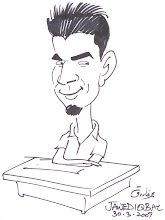Reference:
Blakemore, J.E., Berenbaum, S.A., & Liben, L.S. (Eds.). (2008). Gender Development.
New York: CRC Press.
Choma, C.J, Hossler, S, Leu, R, Nelson, D, Ray, S, Wilcox, B., & Ybarra, B.
(November 2004).
Effects of Cartoons on Children. Retrieved March 23, 2009 from
http://www. bgsu.edu/departments/tcom/faculty/ha/tcom103fall2004/gp9/
Eick, K.(May 1998) Gender Stereotypes in Children's Television Cartoons .
Retrieved March 21, 2009 from, http://cla.calpoly.edu/~jrubba/495/papersS98/paper1.html
Hudak, M.A & Spicher, C.H. (1997, August 18).
Gender Role Portrayal on Saturday Morning
Cartoons. Paper presented at American Phychological Association.
Hussain, A. (1990). Women in participating development. SV Advertising (PVT) Ltd.
Lakoff, R. (1975). Language and Woman’s Place. New York: Harper & Row.
Ogletree, S.M., Martinez, C.N., Turner, T.R., & Mason, B. (2004). Sex Roles: A Journal of
Research, 50: 11-12
Siddiqui, R., Hamid, S., Siddiqui, R., Akhtar, N., Soomro, GY. Gender and Empowerment.
Islamabad: Pakistan Institute of Development Economics.
Thompson., Teresa, L., & Zebrinos. (1995). Gender Roles in Animated Cartoons: Has the Picture
Changed In 20 Years? Sex Roles: A Journal of Research, 32: 651 - 674.
Zach. (2009) Universal Moral lessons in Cartoons, Retreived March 18, 2009 from
http://sesquipedaliancatachresis.blogspot.com/2009/03/universal-moral-
lessons-in-cartoons.html












